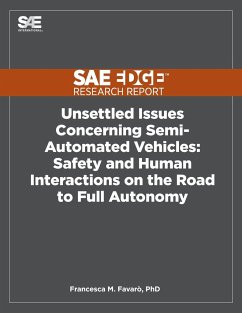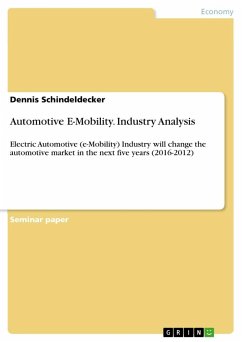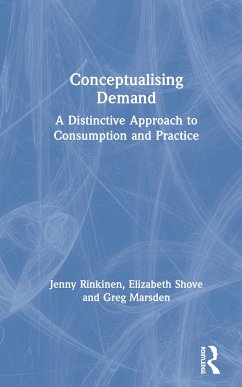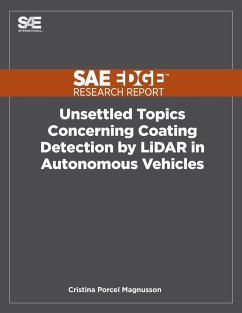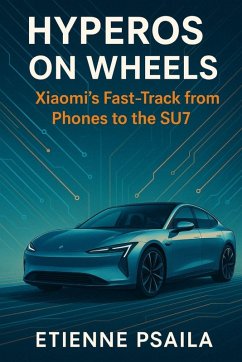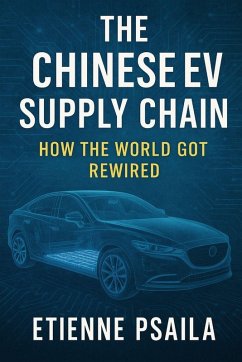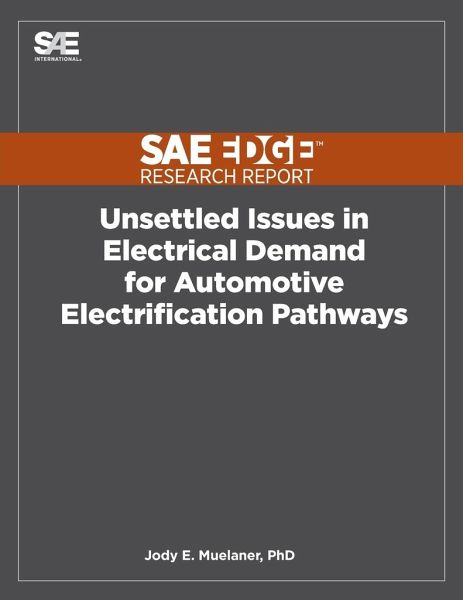
Unsettled Issues in Electrical Demand for Automotive Electrification Pathways
Versandkostenfrei!
Versandfertig in 1-2 Wochen
107,99 €
inkl. MwSt.

PAYBACK Punkte
54 °P sammeln!
With the current state of automotive electrification, very large uncertainties preclude predicting which electrification pathway is likely to be most economical over a 10- to 30-year outlook. Therefore, the development of a range of technologies should continue including statically charged battery electric vehicles (BEVs), fuel cell electric vehicles (FCEVs), plug-in hybrid electric vehicles (PHEVs), and electric vehicles designed for a combination of plug-in and electric road system (ERS) supply. The most significant uncertainties are for the costs related to hydrogen supply, electrical suppl...
With the current state of automotive electrification, very large uncertainties preclude predicting which electrification pathway is likely to be most economical over a 10- to 30-year outlook. Therefore, the development of a range of technologies should continue including statically charged battery electric vehicles (BEVs), fuel cell electric vehicles (FCEVs), plug-in hybrid electric vehicles (PHEVs), and electric vehicles designed for a combination of plug-in and electric road system (ERS) supply. The most significant uncertainties are for the costs related to hydrogen supply, electrical supply, and battery life. Consequently, efforts should focus on the techno-economic analysis of these parameters. The cost of green hydrogen will depend on many factors, including electrolyzer and fuel cell costs, life spans and efficiencies, distribution and storage costs, the time-based cost of renewable electricity, and the extent to which more efficient electrolyzers with heat recovery methods can be used. Green hydrogen will be required as an industrial feedstock for difficult-to-decarbonize areas such as aviation and steel production and for seasonal energy buffering in the grid. The leveling effect of this flexible demand must be considered with respect to time-dependent electricity costs. Greater certainty around hydrogen leakage rates-as well as the impact of producing composite tanks and fuel cells-is required to determine the carbon intensity of a hydrogen energy system. Variation in estimates for the electrical distribution costs linked with different pathways is largely the result of differences between geographical regions. Unit costs are well established for power converters and cabling associated with transmission and distribution. What is required here is a greater number of region-specific cost models, especially for ERSs. An improved understanding of vehicle battery life is vital in evaluating the cost of battery and hybrid vehicles. For ERSs, it is critical to understand how battery life will be affected by frequent cycling and the extent to which battery technology from hybrid vehicles can be applied. ERSs must also now be tested on busy public roads to establish maintenance costs. NOTE: SAE EDGE Research Reports are intended to identify and illuminate key issues in emerging, but still unsettled, technologies of interest to the mobility industry. The goal of SAE EDGE Research Reports is to stimulate discussion and work in the hope of promoting and speeding the resolution of identified issues. These reports are not intended to resolve the challenges they identify or close any topic to further scrutiny.



